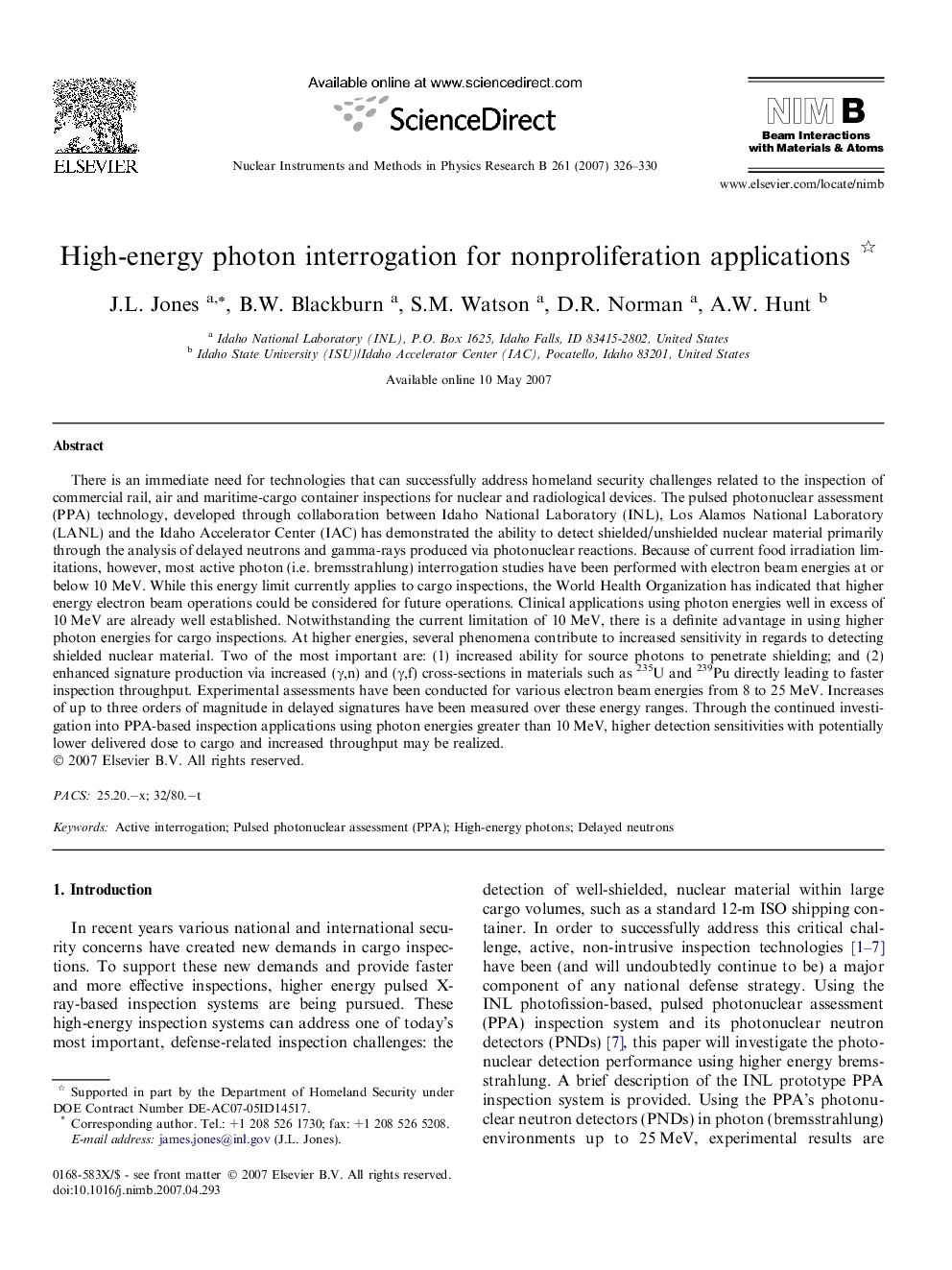| Article ID | Journal | Published Year | Pages | File Type |
|---|---|---|---|---|
| 1685712 | Nuclear Instruments and Methods in Physics Research Section B: Beam Interactions with Materials and Atoms | 2007 | 5 Pages |
There is an immediate need for technologies that can successfully address homeland security challenges related to the inspection of commercial rail, air and maritime-cargo container inspections for nuclear and radiological devices. The pulsed photonuclear assessment (PPA) technology, developed through collaboration between Idaho National Laboratory (INL), Los Alamos National Laboratory (LANL) and the Idaho Accelerator Center (IAC) has demonstrated the ability to detect shielded/unshielded nuclear material primarily through the analysis of delayed neutrons and gamma-rays produced via photonuclear reactions. Because of current food irradiation limitations, however, most active photon (i.e. bremsstrahlung) interrogation studies have been performed with electron beam energies at or below 10 MeV. While this energy limit currently applies to cargo inspections, the World Health Organization has indicated that higher energy electron beam operations could be considered for future operations. Clinical applications using photon energies well in excess of 10 MeV are already well established. Notwithstanding the current limitation of 10 MeV, there is a definite advantage in using higher photon energies for cargo inspections. At higher energies, several phenomena contribute to increased sensitivity in regards to detecting shielded nuclear material. Two of the most important are: (1) increased ability for source photons to penetrate shielding; and (2) enhanced signature production via increased (γ,n) and (γ,f) cross-sections in materials such as 235U and 239Pu directly leading to faster inspection throughput. Experimental assessments have been conducted for various electron beam energies from 8 to 25 MeV. Increases of up to three orders of magnitude in delayed signatures have been measured over these energy ranges. Through the continued investigation into PPA-based inspection applications using photon energies greater than 10 MeV, higher detection sensitivities with potentially lower delivered dose to cargo and increased throughput may be realized.
